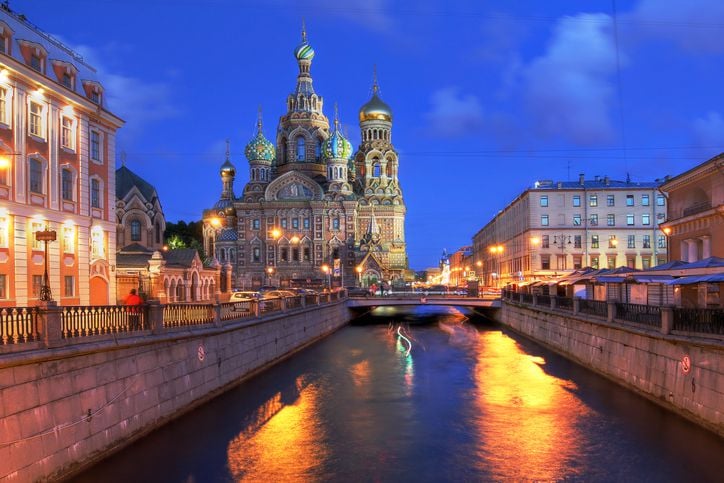The enchanting, ancient cities dotted along the coasts of the Baltic Sea are what inspire many cruise goers to explore this region by ship. But when is the best time to take a Baltic Sea cruise and what delights should you expect to encounter at different times of the year?
Summer: Enjoy the Midnight Sun on a Baltic Sea cruise
The rounded, candy-cane onion domes of St Petersburg’s various churches; the bronze statue of the Little Mermaid at Langelinie Pier in Copenhagen; the rustic, traditional fishermen’s boats in tiny Norwegian fjord-side communities: all of these look better in the sunshine, which is one of the reasons that most cruises in the Baltic Sea depart during the summer months.
 Throughout this season, cities around the Baltic Sea have long, lingering hours of sunlight, giving visitors plenty of time to explore. But further north, daytime is even stranger thanks to the phenomenon of the Midnight Sun.
Throughout this season, cities around the Baltic Sea have long, lingering hours of sunlight, giving visitors plenty of time to explore. But further north, daytime is even stranger thanks to the phenomenon of the Midnight Sun.
In North Cape in Norway, the northernmost point of Europe and cities such as St Petersburg in Russia and in the north of Sweden and Iceland, the sun never quite drops below the horizon. Parties explode onto the streets as locals forget whether it’s morning or night, while the harbor cities that you dock at on your cruise are open to being discovered – at any hour of the day.
Which months are best for summer cruises in the Baltics?
The high season for summer cruises is during July and August when prices are higher and crowds are more numerous.
If you’re happy to pack a few more layers of clothing, May, June and September offer a cheaper – and quieter – alternative to these peaks months. You can also expect temperatures to hover between 60 and 70˚F (15 and 21˚C most days).
The following northern European cities are best experienced on a Baltic Sea cruise in summer:
- St Petersburg, Russia
- Tallinn, Estonia
- Riga, Latvia
- Gdansk, Poland
- Copenhagen, Denmark
- Stockholm, Sweden
- Oslo, Norway
Winter: The best time for the Aurora Borealis
Unfortunately, during winter, much of the Baltic Sea ices over, meaning cruises cannot sail during this period. However, if you head further north on a cruise into the Norwegian Sea, this season is ripe for seeing one of the northern hemisphere’s great natural phenomena: the Northern Lights.
 Norway leads the pack when it comes to seeing the shimmering patterns of this natural light show. Between September and April, days are short and temperatures are chilly but this is when the night’s sky is at its darkest and is the optimum period for catching the Aurora Borealis in all their brightly colored glory.
Norway leads the pack when it comes to seeing the shimmering patterns of this natural light show. Between September and April, days are short and temperatures are chilly but this is when the night’s sky is at its darkest and is the optimum period for catching the Aurora Borealis in all their brightly colored glory.
Choose a cruise that includes stops such as Svalbard, a Norwegian island deep in the Arctic Circle that experiences absolute darkness for the months of November and January, or the Icelandic capital Reykjavik, where excellent conditions for clear skies, combined with a series of hot springs and national parks within a short distance from the city, make it an essential stop off on a cruise.
What’s more, the landscapes of Norway and Iceland are even more mesmerizing beneath a shimmering layer of snow and while you can expect to feel the cold – so pack thermals and plenty of windproof outer layers – those who venture this far north during winter are justly rewarded.
No comments yet
There are no comments on this post yet.






Leave a comment